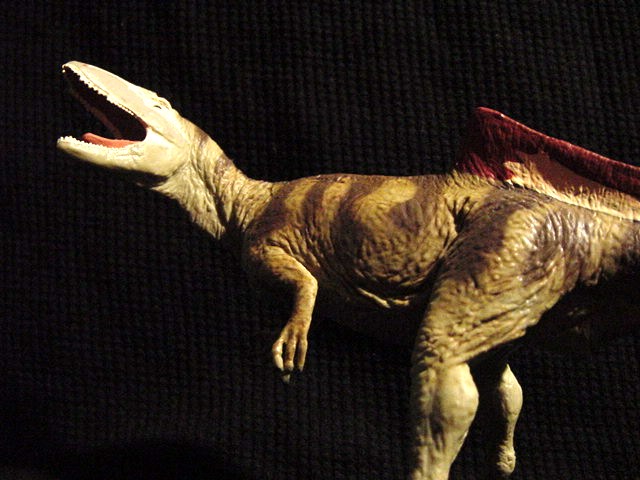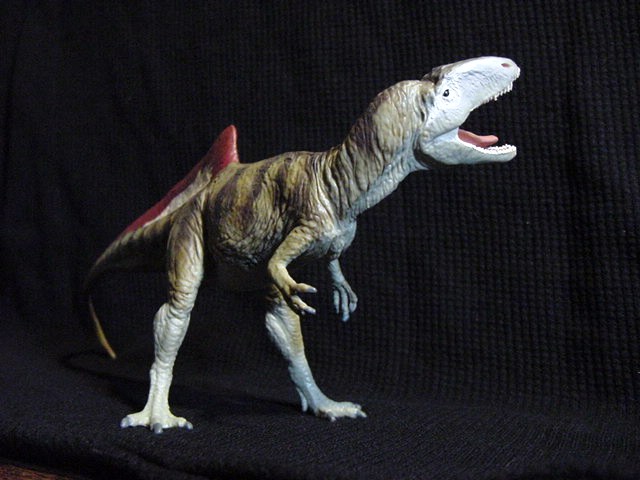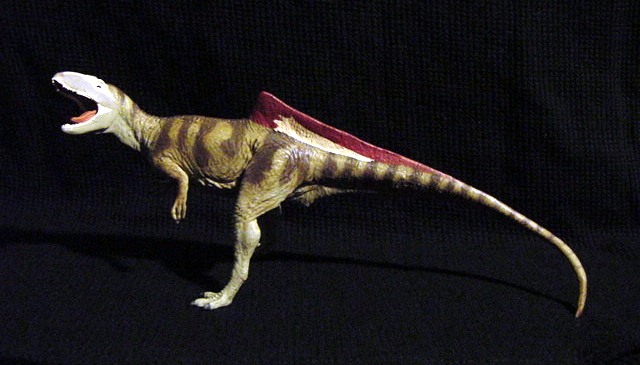In recent years, the fossil beds of Spain have provided spectacular examples of dinosaurs, but perhaps the most famous is Concavenator. First revealed in 2010, this allosauroid’s distinctive physique made it an instant celebrity. The peculiar hump along the back does not seem as awe-inspiring as the humongous sails lining the backs of certain other critters, yet it has clearly made an impression upon us. This distinction is further bolstered by the presence of quill knobs on the forearms – not a new feature to theropods – but certainly piling on mounds of mystique to what might have otherwise been a forgettable, modestly-sized theropod.

It seems that artists have found Concavenator corcovatus to be utterly irresistible. A simple image search online reveals a plethora of pictures for this animal, with many of them carrying quills all over the body. Not even in a Todd Marshall theropod orgy would one expect to find this much quill craziness (and don’t forget Sean Cooper’s amazing sculpt). Given the increasing evidence of theropods with feathery integuments, these reconstructions may not be as far fetched as one might think. While the Carnegie sculptor likely began working on the Concavenator model two years in advance of release, it is strange that this model does not seem to bear a single quill, not even on the forearms. I can only imagine that it was deemed too great a safety issue or manufacturing concern for final production.

The signature dorsal hump has been assigned at least two possible functions. The first is thermoregulation, which is not a terribly easy feature for an artist to convey. The second proposed function is display, perhaps strutting about in courtship rituals. This is another opportunity that an artist simply cannot pass up, and Concavenator’s signature feature is almost always adorned in some sort of flashy color. In many reconstructions, it bears a reddish hue, contrasted with the more neutral tones of the body. In some cases, this can actually make the bulk of the animal look comparatively boring (see the CollectA Concavenator of 2011). For the Carnegie reconstruction, this is certainly not the case. The basic cream color becomes a more sand-like tone toward the center of the body, while the flanks are streaked in brown. This ensures that even without the hump, this model would still be interesting to look at.

The display hump has also been given more than the typical splash of red. The red actually appears in a long band over what can only be described as a creamy middle. This effect helps the red stand out, to a greater extent than if the entire hump had been coated in a single color. It could also be a clever way to avoid the mistaken impression of a wounded animal (see the original Carnegie Miragaia sculpture, which had only red along the neck without the counterbalance of blue). My only gripe is that the colors seem duller than the original prototype stock photo. Given the strong visual impression of last year’s Carnegie Carnotaurus model, I had hoped for a slightly more striking appearance. It is difficult to argue with the choice of red for exuding sexual energy, of course. If Les Misérables has taught us anything, it’s that red is the color of desire, yes?

Crafting this piece at 1:25 scale has enabled considerable detail to be filled into its 18 centimeter form, though it will no doubt continue to irritate Carnegie traditionalists yearning for the days of consistent 1:40 scale models. As with most Carnegie figures, this model does reveal the substantial research that went into its design, making it a very accurate representation of the animal. The head conveys the hatchet-like shape of a carcharodontosaurid, the arms are held in the proper position, and the feet are elegantly formed and not oversized “clown feet”. Hopefully these models will start getting attached to bases, so they will not require their tails as a third support leg. Otherwise, it is an excellent example of a very exotic dinosaur, and by far the best available on the mass market today.
Concavenator (Carnegie Collection by Safari Ltd.) is a post from The Dinosaur Toy Blog